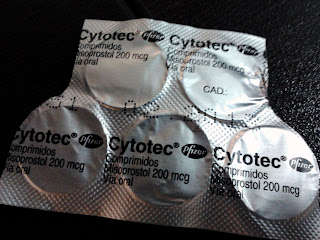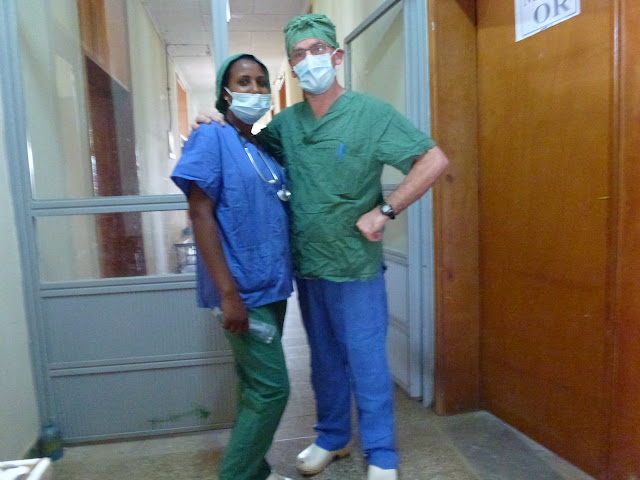I am never short of something to write about, and theres a backlog of interesting topics I want to get to eventually – the markets, the prison across the road, HIV, my colleagues here, various cases Ive seen as outpatients, and more . The trouble is I feel compelled to report on the more dramatic stuff that happens at work and I apologise to anyone who is getting a bit sick of obstetric horror stories from Motta – I am sort of getting a bit sick of it myself but Obstetrics and maternal health is my profession and I didn’t enter oit because I find it boring, but because it fascinates me, you could say I love it, and Ive always felt that what women do, in carrying and giving birth to our little ones, is astonishing and wondrous. It is such an extraordinary thing to see a tiny baby emerge and take its first breath, and to set off so innocently down that long road into the future….
I suppose I am in a somewhat reflective mood this morning because this week three babies didn’t get very far at all down that long road, something these poor people accept as part of life. Like maternal death, stillbirth and neonatal death is so uncommon where I usually work that each loss is seen as an outrage, as wrong and unfair, and often enough prompts anger and a search for someone to blame, and dare I say, take to court. But here, as I was near last night, I am thanked and people bow their heads towards me, and the midwives rub my back and hold my hand after a baby died, saying “it is good, you saved the mother”
One of the babies that died this week belonged to the woman who nearly died herself from bleeding. Babies are not placed in their own separate little cots as they are back home, but into the bed with the mother, under the mess of scruffy old blankets, the mothers ragged clothes and wraps so its often hard to see exactly where they are, let alone how well they are. I am pretty certain midwives here make no attempt to check on them at any time – something which is left entirely to the parents. So in this case, with so much drama going on round the mother, little notice was taken of the baby which you may remember had been delivered by one of the midwives using a “Kiwi Cup”, the suction device that goes on its head. Back home there is a limit to how long the cup can remain on of 20 minutes, for various safety reasons, and when I am using one there is always a midwife writing down the exact moment it is attached, when I am applying traction, recording if the cup is pulled off prematurely and reattached, and the exact moment of birth. Here the record will simply state “Alive neonate delivered with vacuum, APGAR Score 8/9, Birth weight 2900 gm”. Back home the combined medical and nursing notes describing even a straightforward delivery will fill a page or more! This is all a necessary part of whats called Clinical Governance, meaning all cases are liable for review and audit so standards are maintained and improved.
So what happened to this baby? Well, family became concerned after the focus on the mother had eased, and when I looked at his face peering out from the wraps, it looked deathly pale. Uncovering the baby completely revealed an undernourished very pale , weak neonate with a massively enlarged head, which I at first thought must be hydrocephalus, but then, if it had been, vaginal delivery would have been impossible. In fact after birth there had been massive bleeding under the skin of its head, probably from trauma assosciated with the delivery, not the more common cephalhematoma which can even occur after a normal birth, but whats known as a subgaleal haemorrhage, much less common and much more dangerous. The head was soft and spongey , a large spreading bruise obscuring the bony landmarks and fontanelles, it was 40cm in circumference and had probably been 34cm at birth, the baby needed what its mother received, Blood. But nobody regarded that as an option here, and the baby was already close to death. And so it eventually “expired” as did twins, one of which had been born at home and the other in hospital weighing 900gms.
 |
| Cephalhaematoma - this baby was born at home and they were worried about the swelling. It has some sort of makeup on eyebrows and eyelashes |
And now for some better news: Yesterday another set of twins was delivered and they have both gone home now and are well, but they also had an interesting story – the twin pregnancy was unrecognized until after the first one had been delivered, and then an arm appeared! At this point the midwife rang for me, and fortunately I was almost back at the house with my shopping, so I hurried home and raced across to maternity. Sure enough there was a hand but the head was in the pelvis as well, meaning a caesarean might not be needed if the arm could be pushed back to enable the head to come down past it. Such maneuvering and poking about is incredibly painful for the mother – back home we might consider an epidural anaesthetic or even just doing a caesarean – and this woman grimaced and tossed her head from side to side and sucked her breath in through clenched teeth but didn’t utter a sound while all this went on, and while I attached a Kiwi Cup and then reattached it because the babys fingers got under it – and then with a couple of good pushes from her and a careful pull by me, Twin II appeared in remarkably good condition. As is usual here, 4 hours later she went home, as there was no abnormal bleeding and both babies were sucking well. More than likely she walked, and had bare feet.





























